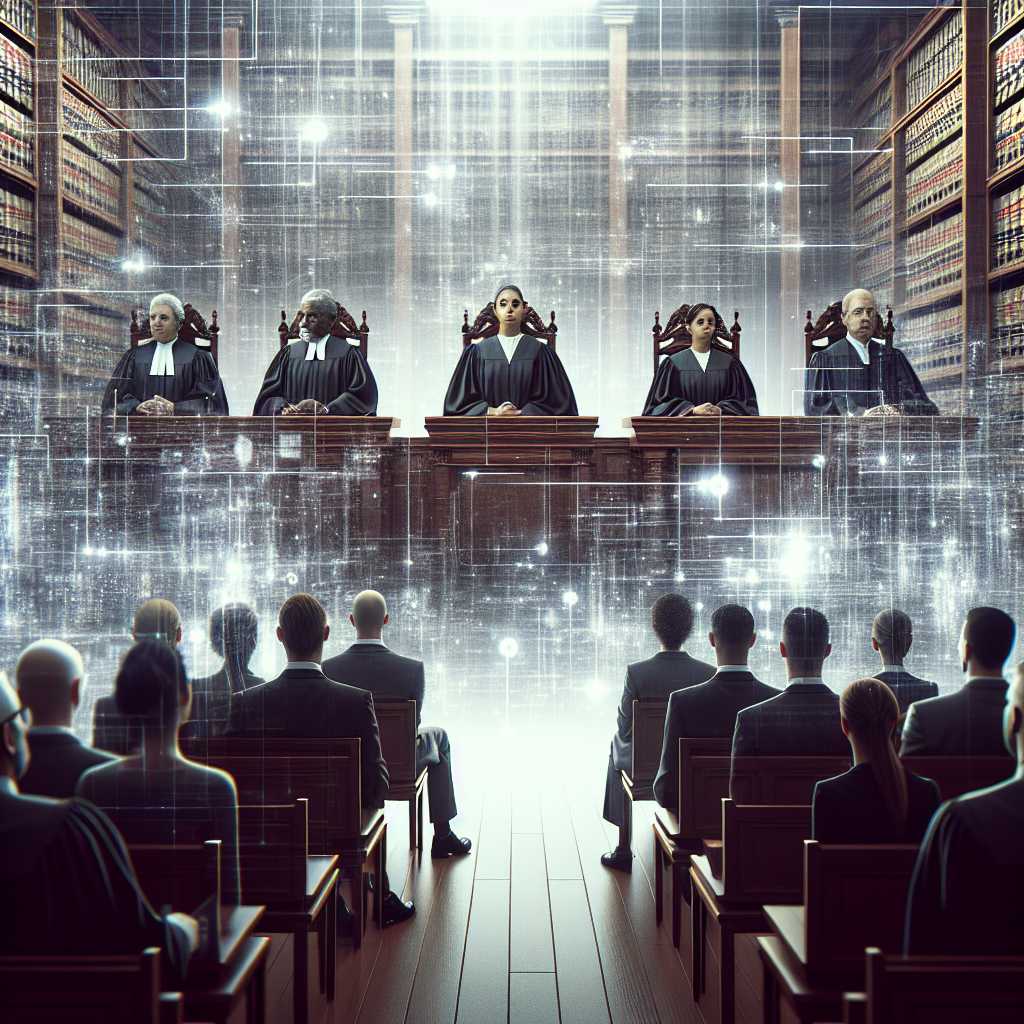Example Article
Introduction: The Supreme Court and Digital Privacy in the 21st Century
The rapid advancement of technology over recent decades has fundamentally transformed how society interacts with information. This transformation has presented unique challenges for legal systems worldwide, particularly regarding privacy rights. The Supreme Court, as the highest judicial authority in the United States, plays a pivotal role in interpreting constitutional protections in light of emerging digital realities. While traditionally focused on physical searches and tangible evidence, the Court has increasingly grappled with questions surrounding data privacy, surveillance, and individual autonomy online.
This evolving landscape has exposed tensions between state power, corporate interests, and personal freedoms. Cases involving smartphone searches, government surveillance programs, and data collection have come before the Court, forcing justices to balance national security concerns with fundamental rights enshrined in the Fourth Amendment. As society becomes ever more interconnected through digital platforms, the Court’s decisions establish crucial precedents that will influence privacy norms for generations.
Understanding the Supreme Court’s approach to digital privacy requires examining recent landmark rulings and the philosophical underpinnings guiding judicial reasoning. This article explores how the Court navigates this complex terrain, reflecting broader tensions between innovation and civil liberties.
Landmark Cases: Defining Digital Privacy Boundaries
One of the most significant Supreme Court cases concerning digital privacy is Riley v. California (2014), where the Court unanimously ruled that police must obtain a warrant before searching a suspect’s smartphone. Chief Justice Roberts emphasised that modern smartphones contain vast amounts of personal data, far exceeding traditional physical items. This decision marked a critical recognition of digital devices as extensions of personal privacy deserving robust constitutional protections.
Another key case is Carpenter v. United States (2018), which addressed whether law enforcement can access historical cell phone location data without a warrant. The Court held that such data is protected under the Fourth Amendment due to its comprehensive nature in tracking an individual’s movements over time. This ruling underscored a shift towards acknowledging that digital footprints demand new legal safeguards distinct from traditional notions of property or physical intrusion.
These cases illustrate how the Supreme Court is recalibrating legal standards to fit technological contexts. By setting clear requirements for warrants and recognising the sensitivity of digital information, the Court helps delineate boundaries that protect citizens’ rights while accommodating law enforcement needs.
Philosophical Challenges: Balancing Security and Liberty
At its core, the Supreme Court’s engagement with digital privacy reflects a perennial philosophical challenge—how to balance collective security against individual liberty. In an era marked by heightened concerns about terrorism and cybercrime, governments argue for expansive surveillance powers to prevent threats. Conversely, advocates warn against unchecked intrusions that erode democratic freedoms and chill free expression.
The Court’s jurisprudence reveals an ongoing struggle to reconcile these competing interests. Some justices emphasise strict adherence to constitutional safeguards as essential bulwarks against governmental overreach. Others adopt a more pragmatic stance, recognising evolving threats and technological complexities may necessitate flexible interpretations.
This dialectic shapes not only legal outcomes but also public perceptions about privacy norms and trust in state institutions. The Supreme Court thus functions as a critical forum where societal values about privacy are debated and concretised into binding legal principles.
Future Directions: Emerging Technologies and Privacy Jurisprudence
Looking ahead, the Supreme Court faces increasingly complex questions as new technologies emerge. Artificial intelligence algorithms capable of processing vast datasets, biometric authentication systems, and ubiquitous Internet of Things devices all introduce novel privacy considerations. The legal framework crafted in previous cases may require adaptation to address these innovations effectively.
Moreover, globalisation complicates matters further; cross-border data flows challenge traditional jurisdictional boundaries and raise questions about international cooperation on privacy standards. The Supreme Court’s future rulings will likely need to account for these multi-faceted dynamics while safeguarding constitutional protections.
In this evolving context, it is crucial for justices to maintain a forward-looking perspective that anticipates technological trends without sacrificing foundational rights. Their decisions will shape not only American legal doctrine but also influence global debates on digital privacy.
Conclusion: The Supreme Court as Guardian of Digital Privacy Rights
The Supreme Court occupies a vital position at the intersection of law, technology, and civil liberties. Its evolving jurisprudence reflects an effort to adapt constitutional principles to a world transformed by digital innovation. Landmark rulings like Riley and Carpenter demonstrate a commitment to upholding individual privacy amid expanding government capabilities.
Nevertheless, ongoing philosophical tensions between security imperatives and liberty protections ensure that digital privacy remains a dynamic area of law requiring continual judicial engagement. As emerging technologies present new challenges, the Court’s role as guardian of fundamental rights becomes ever more essential.
Ultimately, how the Supreme Court navigates these issues will profoundly impact societal understandings of privacy in the digital age—affirming that constitutional values endure even as technology redefines human experience.
Notes
- In Riley v. California (2014), the Supreme Court ruled unanimously that police need warrants to search smartphones.
- Carpenter v. United States (2018) established that accessing historical cell phone location data requires a warrant under the Fourth Amendment.
- Digital data now often contains more personal information than traditional physical objects considered under earlier privacy laws.

